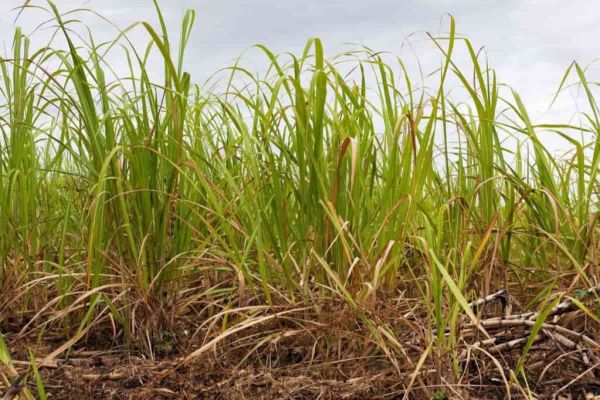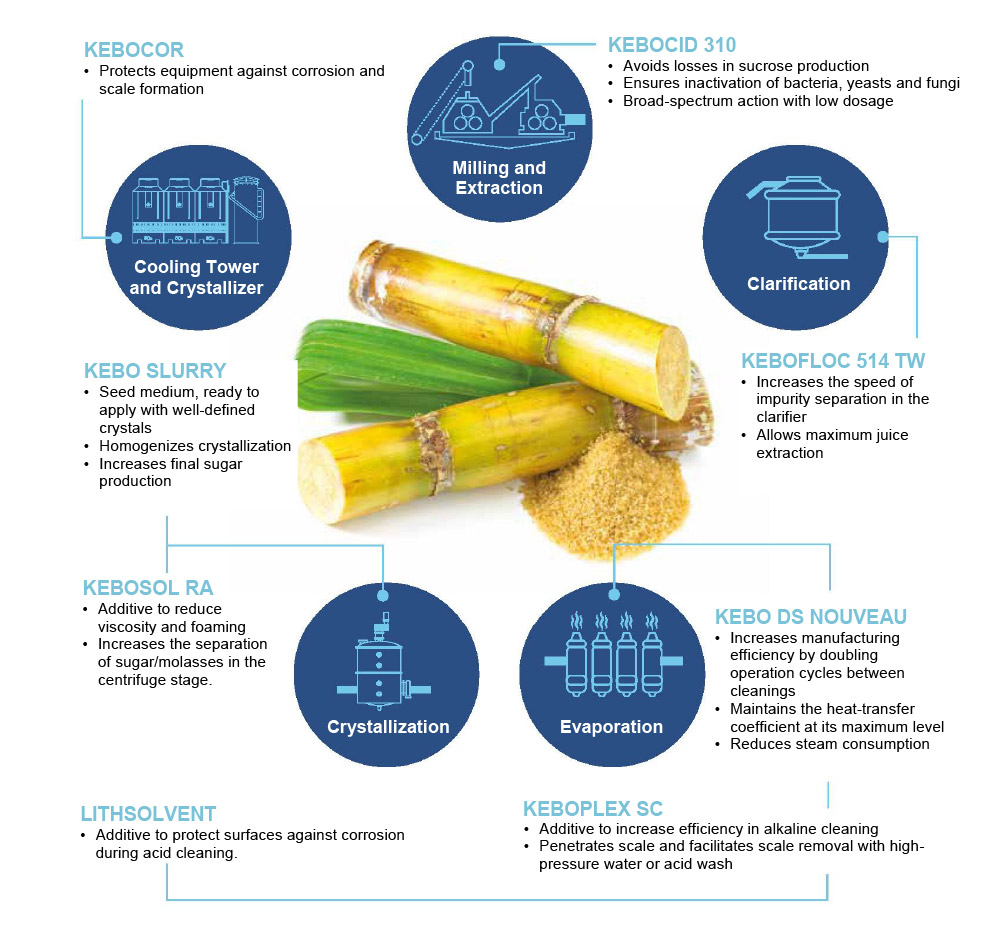5 Expert Tips: Maximizing What Is Sugar Cane Used For
Wiki Article
Checking Out the Versatile Use Sugar Cane Beyond Sugar
Sugar Cane is often connected exclusively with sweeteners, yet its applications extend much past. This flexible plant plays a critical function in different markets, consisting of bioplastics and biofuels. Furthermore, its fibers contribute to lasting building and construction and textiles. The financial ramifications of sugar Cane production better emphasize its significance. As developments proceed to arise, the possibility of sugar Cane to drive environmental and financial improvements comes to be significantly noticeable. What other surprises does this durable plant hold?The Function of Sugar Cane in Biofuels
As nations seek sustainable power resources, sugar Cane has become a vital gamer in the biofuels industry. This tropical plant is abundant in sucrose, which can be fermented to generate ethanol, an eco-friendly fuel option to fossil gas. The farming of sugar Cane for biofuel manufacturing not just reduces greenhouse gas emissions yet likewise contributes to energy security, particularly in sugar-producing countries.Sugar cane-derived ethanol can be mixed with fuel, improving its octane score and minimizing dependence on non-renewable sources. The by-products of sugar Cane processing, such as bagasse, are valuable for creating electrical power, making the whole manufacturing cycle energy-efficient.
Study remains to check out advanced techniques for maximizing power yield from sugar cane, strengthening its role in the shift to cleaner energy services. As global need for sustainable fuels rises, sugar Cane attracts attention as an essential component of the biofuel sector.
Sugar Cane as a Resource of Bioplastics
Although the environmental impacts of plastic pollution are significantly concerning, sugar Cane uses a promising option as a source of bioplastics. Stemmed from renewable energies, bioplastics made from sugar Cane can considerably minimize reliance on petroleum-based plastics. These bioplastics are produced with the fermentation of sugars drawn out from the walking stick, causing products that can be biodegradable or compostable, depending on their formula.The usage of sugar Cane bioplastics not just diminishes carbon discharges but additionally promotes sustainable farming techniques. By utilizing agricultural waste and byproducts, the total ecological footprint of production is lessened. Additionally, items made from sugar Cane bioplastics can seamlessly incorporate right into existing waste administration systems, attending to concerns about waste buildup.
As markets seek sustainable remedies, sugar cane-based bioplastics stand for a viable option that lines up with global efforts to deal with plastic pollution and cultivate a circular economic climate.
Medicinal Applications of Sugar Cane
Sugar Cane is acknowledged for its antioxidant homes, which add to different wellness benefits. Additionally, it has been utilized in standard solutions throughout societies, highlighting its significance in alternative medicine. These qualities underscore the potential of sugar Cane in the field of medical applications.
Antioxidant Properties of Walking Stick
Various studies have actually disclosed that sugar Cane possesses substantial antioxidant properties, making it a valuable part in medical applications. The phenolic compounds located in sugar walking cane, such as flavonoids and phenolic acids, add to its capability to neutralize complimentary radicals, consequently lowering oxidative stress in the body. This antioxidant task is connected to numerous health benefits, including improved cardio health and improved immune feature. In addition, sugar Cane essences have been revealed to show anti-inflammatory impacts, which can even more support overall health. By combating oxidative damages, sugar Cane may play a duty in the avoidance of chronic diseases, making it an appealing topic of research for its possible restorative uses in modern medicine.Standard Remedies and Makes Use Of
While contemporary medicine often relies upon synthetic compounds, traditional treatments utilizing sugar Cane highlight its longstanding value in numerous cultures. In many exotic regions, sugar Cane juice has been made use of as a natural treatment for disorders such as dehydration and digestion concerns. Its high water web content and important nutrients make it a preferred therapy for urinary tract infections and kidney stones. In addition, sugar Cane is believed to possess anti-inflammatory properties, aiding in the relief of aching throats and respiratory problems. Individual medication usually includes sugar Cane in concoctions to improve energy and improve overall health. These old-time techniques underscore the adaptability of sugar walking cane, expanding its worth beyond sweet taste to incorporate health and wellness and wellness applications.Eco-Friendly Building Products From Sugar Cane
Sugar walking stick, often acknowledged for its sweet yield, is obtaining attention as a resource of eco-friendly building and construction materials. These materials offer lasting structure solutions, featuring biodegradable composites that minimize ecological effect. Furthermore, sugar cane-derived products supply reliable insulation properties, improving energy efficiency in frameworks.Sustainable Structure Solutions
As the international demand for lasting building products increases, innovative services originated from sugar Cane have actually become a viable option. This sustainable source offers different applications in green structure options, specifically via its by-products. Sugar Cane fibers, known for their stamina and sturdiness, can be utilized in developing insulation materials and composite panels. Furthermore, the juice and molasses from sugar Cane can be refined into bio-based adhesives, lowering dependence on petroleum-based products. Using sugar Cane not only minimizes waste yet also adds to decrease carbon exhausts during production. Additionally, integrating these materials right into building techniques sustains the round economic climate, promoting sustainability while dealing with journalism environmental challenges encountered by the building and construction sector.Biodegradable Composite Products
Naturally degradable composite products have actually amassed interest as sustainable choices in building and construction, specifically those acquired from sugar walking stick. These materials make use of the fibrous results of sugar walking cane, such as bagasse, to produce composites that are both light-weight and strong. By including these natural fibers, manufacturers can create products that lower reliance on non-renewable find more info sources and standard plastics. The lasting nature of sugar Cane composites not just reduces environmental influence however also sustains farming economic situations by giving added profits streams for farmers. Furthermore, the biodegradability of these compounds assurances that they do not contribute to long-lasting waste in landfills. As the building and construction sector looks for greener remedies, sugar cane-derived composites present a promising path toward much more environment-friendly structure techniques.
Insulation Characteristics and Perks
The insulation buildings of green construction products stemmed from sugar Cane deal substantial benefits in energy effectiveness and climate control. Sugar Cane fibers have natural shielding qualities that assist regulate interior temperatures, lowering the demand for excessive heating or cooling. This particular adds to decrease energy usage, promoting sustainability in structure methods. Furthermore, making use of sugar cane-based insulation materials is advantageous for interior air quality, as they are much less most likely to emit unpredictable organic substances (VOCs) compared to conventional insulation items. These products are biodegradable, aligning with eco-conscious construction objectives. As the construction market looks for greener alternatives, sugar cane-derived insulation sticks out as an encouraging service that incorporates capability with environmental obligation, supporting both power cost savings and environmental conservation.Sugar Cane in the Textile Market
Although usually forgotten, sugar Cane plays a substantial duty in the textile sector, primarily with the manufacturing of lasting fibers. These fibers, acquired from the plant's results, are progressively acknowledged for their environmentally friendly residential or commercial properties. Sugar Cane fibers, such as bagasse and sisal, are long lasting and eco-friendly, making them appealing alternatives to traditional artificial fibers.Their usage in fabrics promotes sustainability by lowering reliance on petroleum-based products while likewise offering an opportunity for waste decrease from you could try these out sugar production. Additionally, technologies in fabric processing have actually made it possible for suppliers to mix sugar Cane fibers with other products, enhancing the total high quality and convenience of fabrics.
This change in the direction of integrating sugar Cane in fabrics mirrors a more comprehensive trend in the sector, intending for ecologically liable practices. As need for sustainable materials proceeds to rise, sugar walking stick's role in fabrics may expand, using both economic and eco-friendly advantages.
Nutritional Conveniences and Animal Feed

Additionally, sugar Cane includes important minerals and vitamins that enhance the dietary profile of animal feed, enhancing immunity and overall well-being. Its wonderful preference and palatability make it an appealing feed choice, urging feed intake among animals. By integrating sugar Cane into their diet regimens, livestock manufacturers can decrease dependence on standard feed resources, potentially reducing feed costs while maintaining animal wellness and efficiency. Sugar Cane arises as a sustainable and nourishing choice in the area of pet farming. Area The Economic Impact of Sugar Cane Production While lots of farming commodities add to neighborhood economic situations, sugar Cane manufacturing sticks out due to its considerable financial impact throughout numerous areas. This functional crop not only gives employment possibility in distribution, farming, and processing but likewise sustains supplementary industries such as transport and production. In countries like Brazil and India, sugar Cane is an important driver of rural development, cultivating economic security and boosting livelihoods.
The byproducts of sugar walking cane, including ethanol and molasses, additionally branch out revenue streams, producing added markets and lowering dependency on conventional sweeteners - What Is Sugar Cane Used For. As global need for eco-friendly power surges, the function of sugar Cane in biofuel production is ending up being progressively famous, attracting financial investments and increasing local economic situations. On the whole, the financial implications of sugar Cane manufacturing are profound, influencing both local task markets and more comprehensive economic fads in regions reliant on this important crop
Regularly Asked Questions
Just How Is Sugar Cane Processed Into Biofuels?
The handling of sugar Cane into biofuels entails removing juice, fermenting it right into ethanol, and refining see page the product. This technique uses the plant's all-natural sugars, changing them right into renewable resource sources for various applications.What Are the Environmental Advantages of Utilizing Sugar Walking Stick?
The ecological benefits of utilizing sugar Cane include reduced greenhouse gas discharges, boosted dirt health and wellness through sustainable farming techniques, and lower dependence on nonrenewable fuel sources, which jointly contribute to an extra sustainable and eco-friendly farming system.
Can Sugar Cane Be Grown in Any Kind Of Environment?

Sugar Cane prospers in subtropical and tropical climates, calling for warm temperatures, sufficient sunshine, and enough rains. Its growth is limited in cooler areas, making it improper for warm or frozen environments where frost happens.
What Are the Historical Uses of Sugar Cane?
Historically, sugar Cane offered various purposes past sweetening - What Is Sugar Cane Used For. It was used for producing rum, as a resource of biofuel, in typical medication, and for crafting products like paper and molasses, showcasing its varied applications throughout different culturesHow Does Sugar Cane Effect Citizen Economies?
The effect of sugar Cane on local economic situations is significant, giving employment, enhancing agricultural industries, and cultivating trade. Its cultivation sustains country source of incomes and boosts neighborhood markets, adding to overall economic development and neighborhood growth.The financial ramifications of sugar Cane production additionally emphasize its relevance. Derived from renewable resources, bioplastics made from sugar Cane can greatly lower reliance on petroleum-based plastics. Naturally degradable composite materials have actually amassed focus as sustainable options in building and construction, particularly those derived from sugar walking stick. These products make use of the fibrous by-products of sugar cane, such as bagasse, to create compounds that are both light-weight and strong. While numerous agricultural assets add to regional economies, sugar Cane manufacturing stands out due to its considerable financial impact across different regions.
Report this wiki page